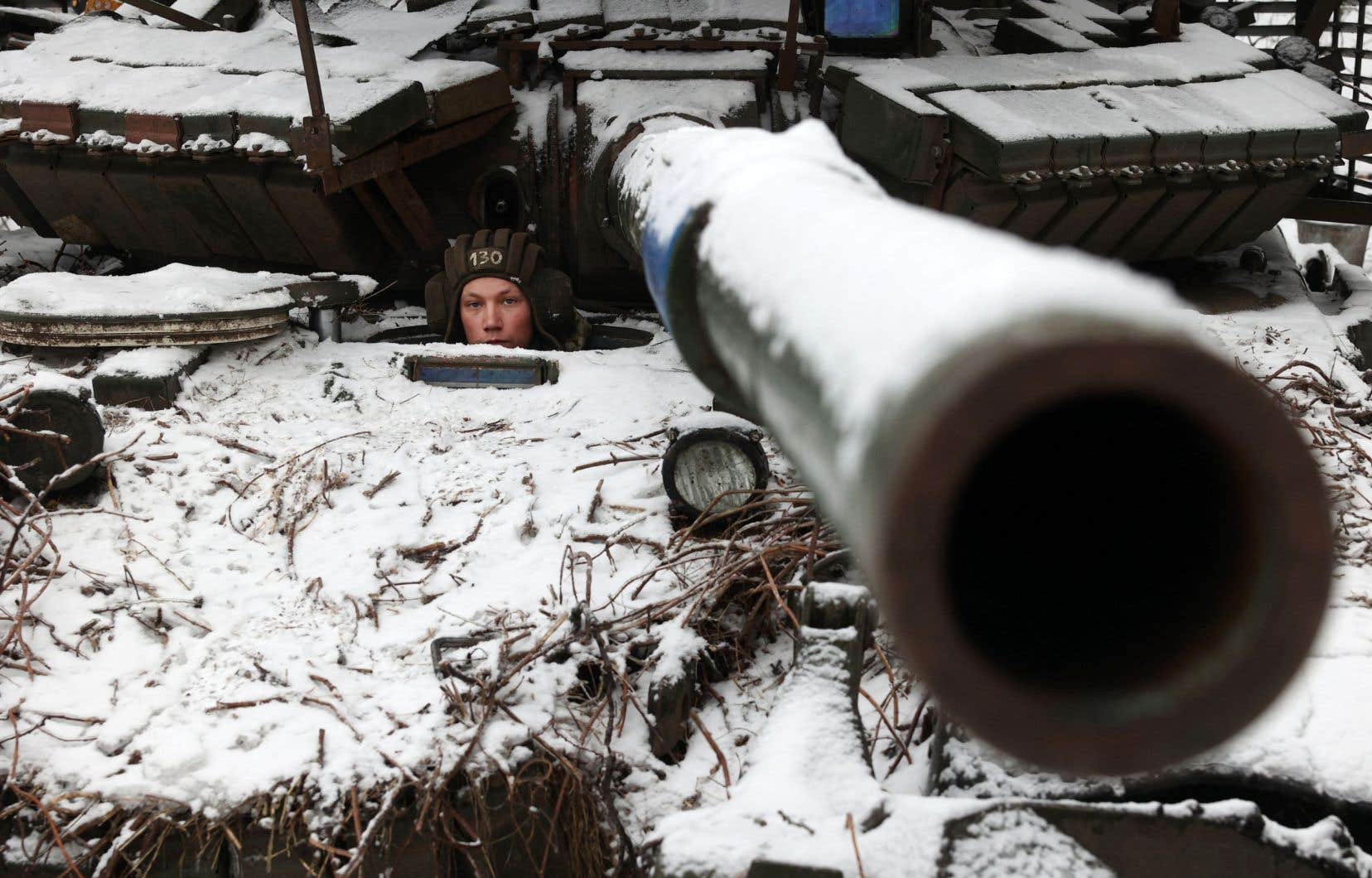Since the outbreak of the Russian army’s invasion on February 24, 2022, two armies have clashed on the 1,000-kilometer-long front line, which has mobilized hundreds of thousands of soldiers who are taking part in the fierce fighting. The Russian army began the attack on Ukraine by sending between 250,000 and 300,000 troops hoping that, in an unannounced blitzkrieg, it could conquer all of Ukraine within two to three weeks.
For Ukraine and Europeans, the widespread attack by the Russian army came as a complete surprise, despite warnings from American and British intelligence services weeks earlier indicating Russia’s intentions. Indeed, since January 2022, around 195,000 Russian soldiers have been carrying out maneuvers on the Ukrainian border, barely concealing their objectives, namely the conquest of the whole of Ukraine. Ukrainian and European leaders (France and Germany) thought this was yet another intimidation of Russia against its neighbor. They believed that Russia would continue negotiations with Ukraine under the Minsk II agreement in order to find a diplomatic path.
The unexpected resistance of the Ukrainian army in the summer of 2022 forced the Russian army to retreat from part of the occupied territory in the spring of 2022 to devote itself to the defense of four regions of eastern Ukraine (Donetsk , Luhansk, Zaporizhia and Kherson). In September 2022, the Russian Parliament annexed them, and they are now part of the Russian state.
To resist attacks by the Russian army, Ukraine has mobilized around one million soldiers since February 24, 2022. On the front line, the Ukrainian army deployed between 200,000 and 300,000 fighters to stop the Russian advance. Facing the Ukrainian army are approximately 400,000 Russian soldiers. Their main task is to maintain the territorial gains achieved in 2022. Russian forces currently occupy between 17 and 18% of Ukraine’s territory.
The war in Ukraine is one of the most devastating military confrontations since World War II, far exceeding the losses of the Yugoslav wars (1991-2002), estimated at 150,000. In Ukraine, civilian and military losses, both sides, are enormous. Neither the Russian government nor the Ukrainian government has released the figures for an obvious reason: to maintain the morale of fighters and civilians. Western intelligence agencies (American and British) estimated Russian losses at between 300,000 and 350,000 dead and wounded; the same estimate that those of the Ukrainian army are around 200,000 soldiers.
A war with many features
The war in Ukraine contains the features — the forms — of several wars of the 20th centurye and XXIe centuries, because it has undergone multiple transformations. It began as a blitzkrieg, comparable to that launched by Nazi Germany against Poland on 1er September 1939. In three weeks, Germany had conquered Poland; its occupation lasted until the Nazi capitulation in 1945. The same type of war was launched against Ukraine by Russia on February 24, 2022. But unlike the Polish case, the Ukrainian defense stopped the advance of Russian troops on the outskirts of Kiev in the summer of 2022.
In a few weeks, this blitzkrieg transformed into trench warfare comparable to that of the First World War. The fighting takes place on a front line of 1000 kilometers without either army making a major breakthrough. The failure of the Ukrainian counter-offensive in the summer of 2023 now heralds a long and deadly war of attrition.
There are two strategies facing Ukraine to transform the current war of attrition into a shorter and possibly victorious war. The first strategy consists of increasing the number of soldiers on the front through a new wave of mobilization. This was the strategy suggested by General Valery Zalouzhny, former chief of staff of the Ukrainian army. General Zalouzhny wanted the government to declare a new mobilization, aiming to recruit 500,000 new soldiers, in order to strengthen the front lines; President Zelensky refused this option.
On February 8, the latter replaced Zalouzhny with General Oleksandr Syrsky. Moving half a million workers to the front presented a risk of collapse of the Ukrainian economy that he did not accept.
Another strategy (which does not exclude additional mobilization limited in number), favored by Zelensky to break war weariness and modify the balance of power on the front line, currently unfavorable to Ukraine, consists of technologically outclassing the Russian army by receiving sophisticated weapons from Ukraine’s allies such as medium and long-range missiles, F-16 planes, drones, etc. The decision of the European Union (EU), on 1er Last February, to grant economic and military aid of 50 billion euros for a period from 2024 to 2027 therefore represents a historic turning point for Ukraine and its army. It favors the transformation of the current war into an electronic war accompanied by deliveries of new generation weapons.
The EU’s support clearly indicates that its 27 members now view the Russo-Ukrainian war not as a bilateral war between Russia and Ukraine, but as a war between Russia and Europe. By massively aiding Ukraine, Europe is sending a significant message to Russia: the survival of the Ukrainian state is essential for the peace and stability of democratic Europe governed by laws and not by brute force.
EU aid to Ukraine was followed by the Canadian government’s decision to provide $9.7 billion in aid to Ukraine. This amount was announced during the visit to kyiv on February 2 of the Canadian Minister of Foreign Affairs, Mélanie Joly.
The Ukrainian government also hopes that this aid from the EU and Canada will influence the foreign policy of the United States, where 60 billion dollars granted by American President Joe Biden to Ukraine are blocked in Congress due to of the opposition Republican Party. Because without American military and economic aid, the main goal of the Ukrainian army — the recapture of the national territory currently occupied by the Russian army — remains unrealizable.
